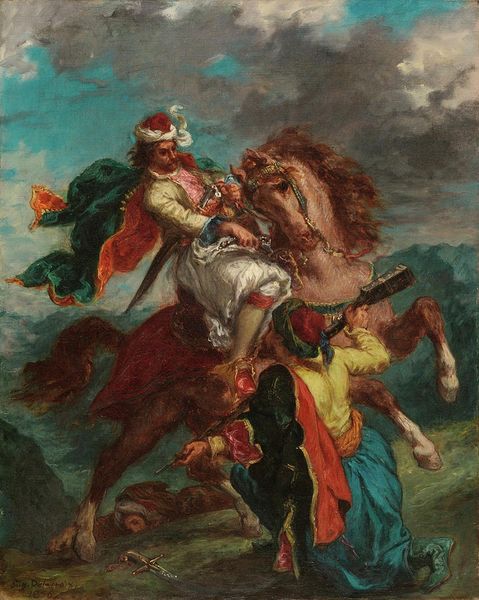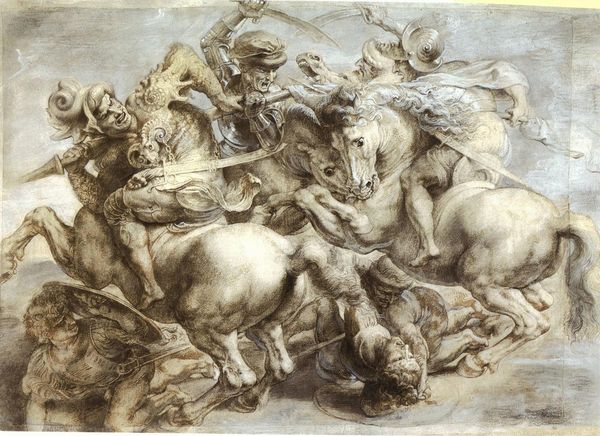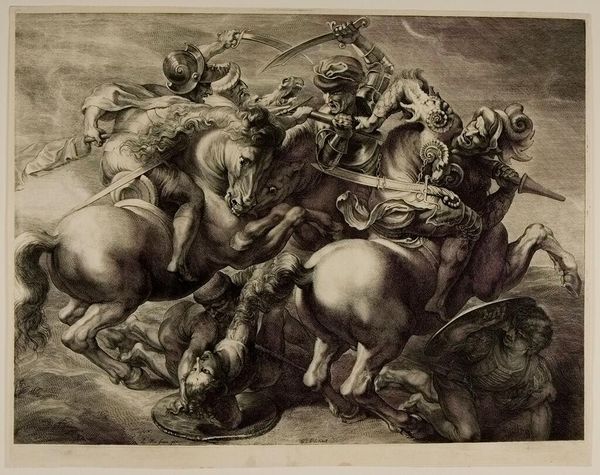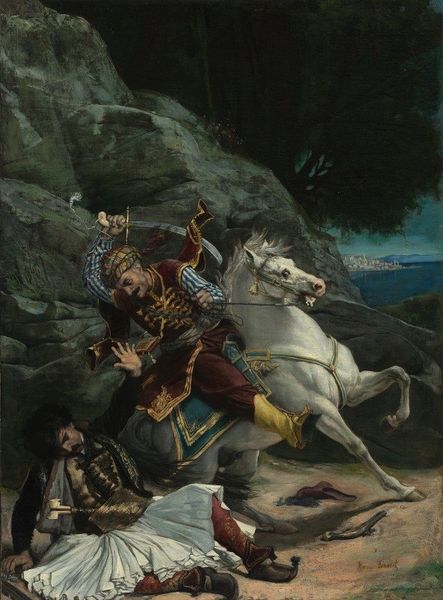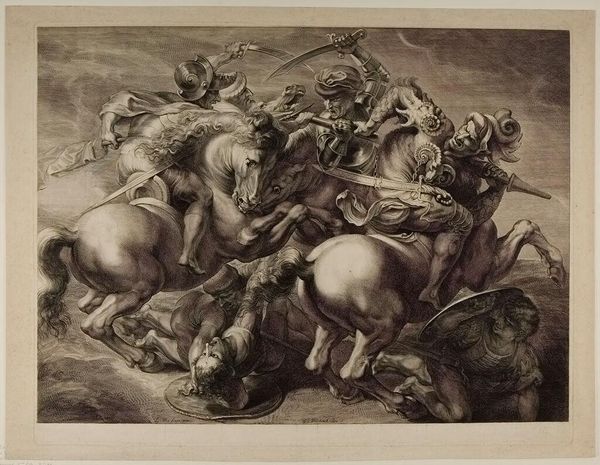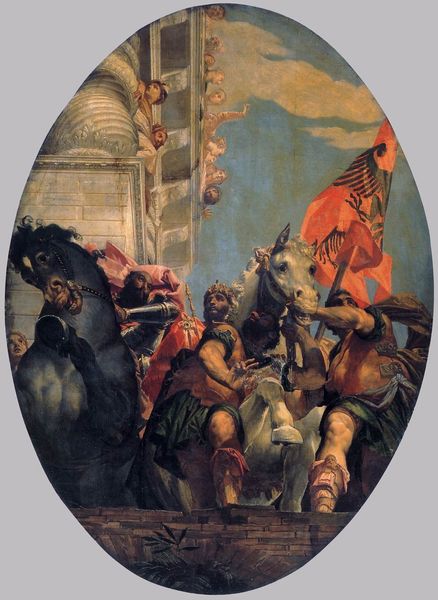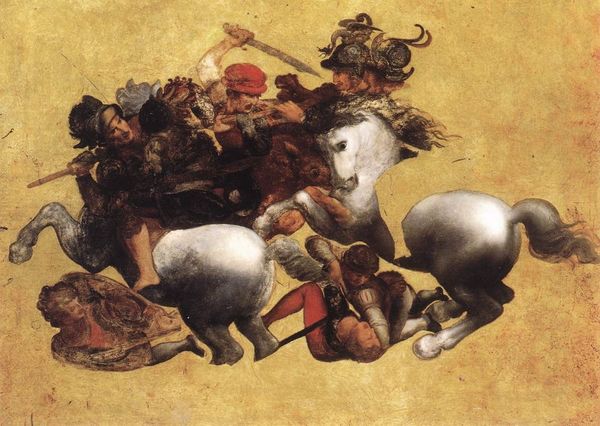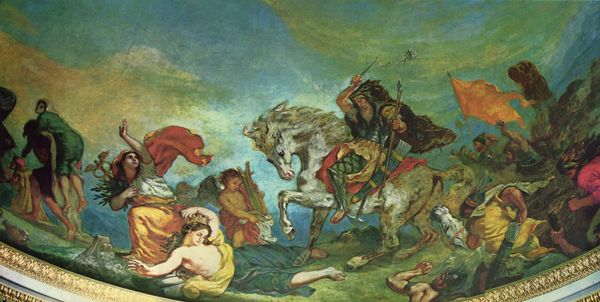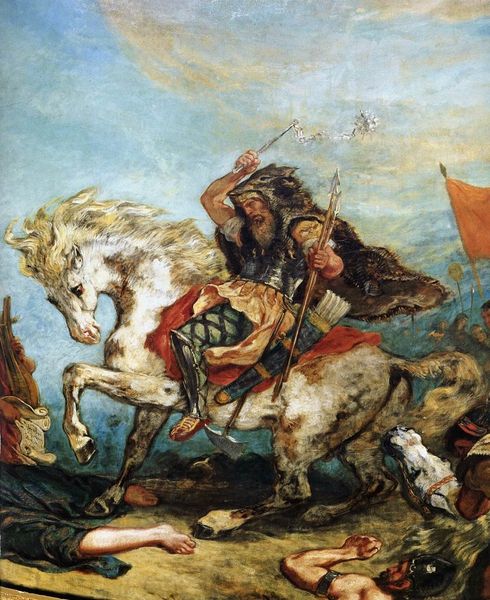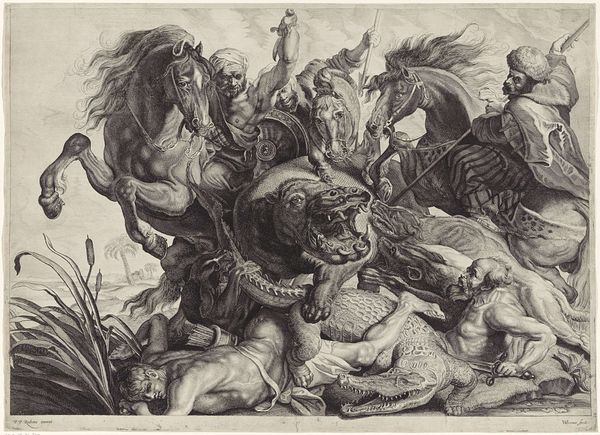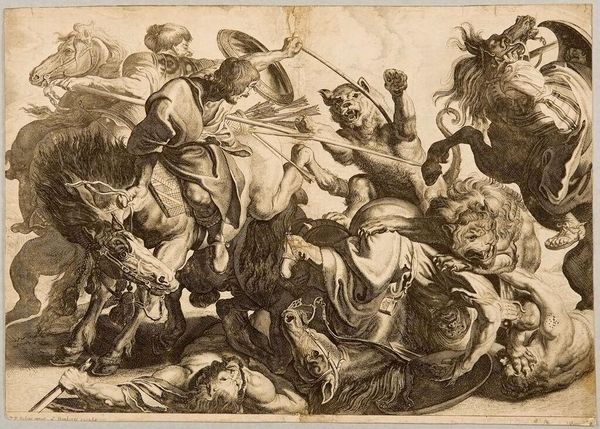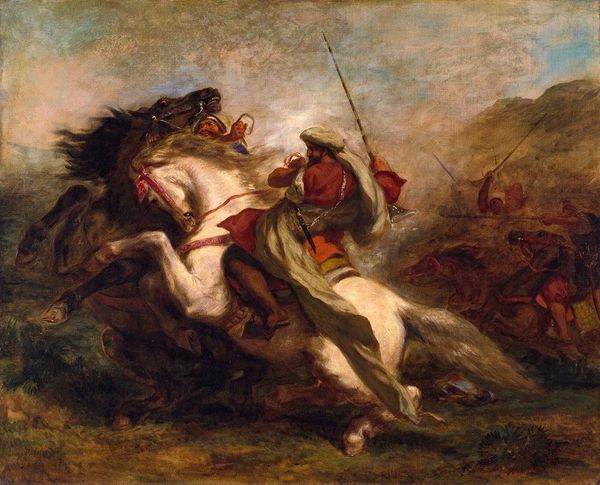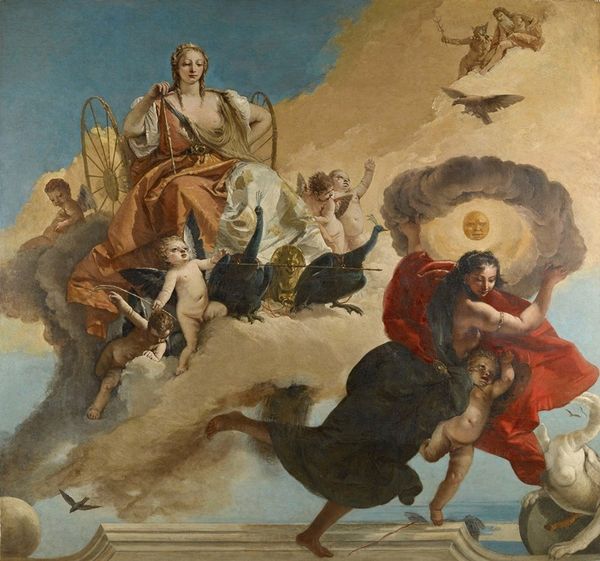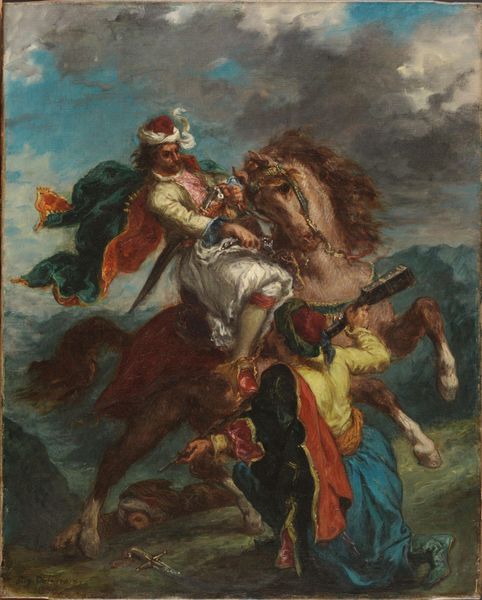
painting, oil-paint
#
baroque
#
painting
#
oil-paint
#
landscape
#
figuration
#
oil painting
#
mythology
#
human
#
genre-painting
#
history-painting
Dimensions: 248 x 321 cm
Copyright: Public domain
Curator: Well, right away, my gut feeling is that I am witnessing organized chaos, which is perhaps the point. Editor: Indeed! We are looking at Peter Paul Rubens's oil on canvas, “Hippopotamus and Crocodile Hunt,” painted around 1616 and presently held at the Alte Pinakothek in Munich. This is more than just a genre scene; it’s a glimpse into the socio-political landscape of its time. Curator: You are not wrong. It certainly captures a raw struggle. The bodies intertwined, the animals writhing—there is something primal about the immediacy, wouldn’t you agree? Look at that poor, nearly-unhorsed fellow. He's definitely regretting accepting the invitation for an outing into the jungle today. Editor: Absolutely. Rubens paints motion masterfully, yet there’s also a calculated staging. It's as if the very concept of wilderness needed taming, representation, which Rubens, with his signature baroque style, vividly delivers in this work. The canvas becomes a display of exotic conquests that, while thrilling to the viewer, undeniably speaks to European perspectives on wildness and the subjugation of non-European spaces. Curator: Subjugation? Wow. To me, there is, however, an odd dance between fear and… dare I say, admiration? The tension lies in the precariousness, this ballet with death. Is it truly just about dominance, or a respect—however twisted—for nature's power? You have to also admit that Rubens made something so aesthetically beautiful with paint and canvas, no matter how you break it down from your professional purview. Editor: A valid perspective. There's certainly a complexity in how Rubens romanticizes violence. His skill as a painter can be considered separately from the subject. But, art serves society in many ways, from beauty to propaganda, so my training immediately takes me to social context and the ethics involved with this grand staging of exotic subjugation. This work reflects how societies use power through visuals, constructing an "us versus them" narrative, fueling both conquest and trade under the guise of spectacle. Curator: You've certainly widened the scope for thought! In contrast, the intensity has reminded me how easily our civilized facade can be ripped away in the face of raw survival. Editor: And, hopefully, in doing so, this conversation highlights not just the art itself but also the ongoing conversation it provokes about culture, domination, and even ourselves.
Comments
No comments
Be the first to comment and join the conversation on the ultimate creative platform.
